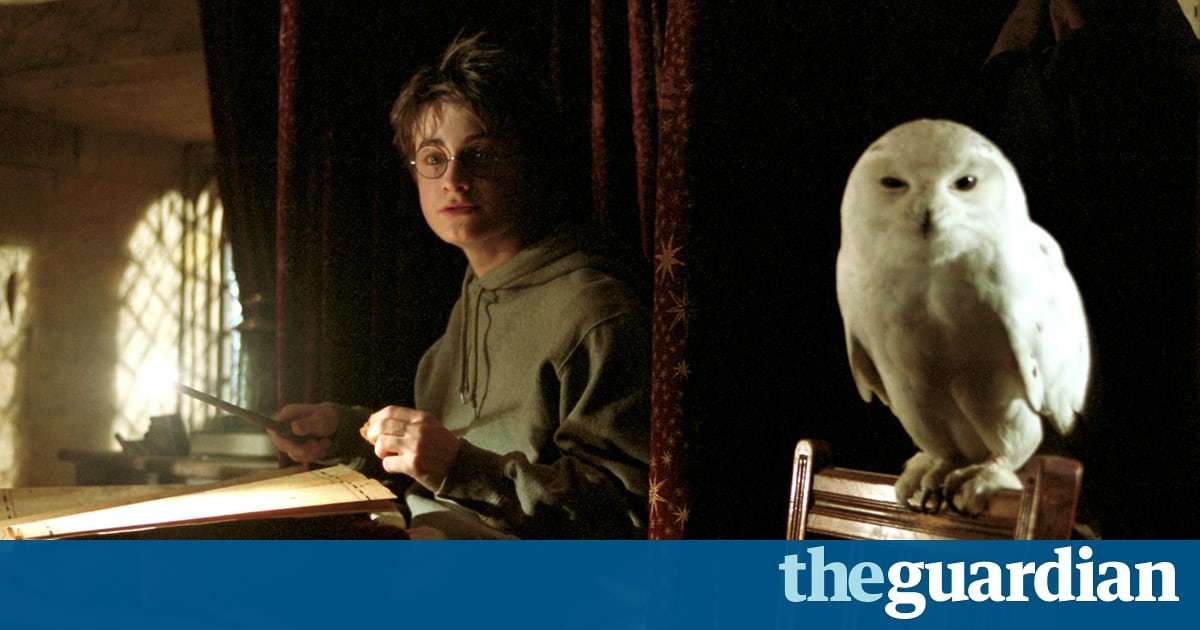From Indonesia to India, wild birds are being sold as pets to families who want their own Hedwig. Ecologists call for protection to help species survive
The Harry Potter phenomenon has broken publishing and cinema box-office records and spawned a series of lucrative theme parks. But wildlife experts are sounding the alarm over a sad downside to JK Rowling’s tales of the troubled young wizard. The illegal trade in owls has jumped in the far east over the past decade and researchers fear it could endanger the survival of these distinctive predators in Asia.
Conservationists say the snowy owl Hedwig – who remains the young wizard’s loyal companion for most of the Harry Potter series – is fuelling global demand for wild-caught birds for use as pets. In 2001, the year in which the first film was released, only a few hundred were sold at Indonesia’s many bird markets. By 2016, the figure had soared to more than 13,000, according to researchers Vincent Nijman and Anna Nekaris of Oxford Brookes University in a paper in Global Ecology and Conservation. At around $10 to $30, the price tag is affordable to most middle-class families.
The issue is of critical concern because the owls being offered for sale are nearly all taken from the wild. “The overall popularity of owls as pets in Indonesia has risen to such an extent that it may imperil the conservation of some of the less abundant species,” Nijman and Nekaris say.
As a result, they urge that owls should be added to Indonesia’s list of protected bird species, pointing out that owls may look cute on display in the market but generally die quickly after being removed from the wild.
Indonesia is not alone. Several other countries have in the past noted increases in sales of owls, which they have also blamed on the popularity of Harry Potter books and films.
The Indian MP Jairam Ramesh has blamed fans of the boy wizard for their role in the dwindling of numbers of wild owls in the country. “Following Harry Potter, there seems to be a strange fascination even among the urban middle classes for presenting their children with owls,” he noted.
However, conservationists also point out that owls are sometimes sacrificed in India for their supposed medicinal properties.
Facebook Twitter Pinterest Owl at bird market in Jakarta. Photograph: Getty
A study by the conservationists Serene Chng and James Eaton found widespread illegal trade in many birds – including owls – at Chatuchak weekend market in Bangkok, Thailand.
“We recorded 17 individuals of three species, all of which are native to and protected in Thailand, indicating that the animals were being illegally traded,” Chng and Eaton state. “Most appeared to be in poor condition ... with some being on the verge of unconsciousness, suggesting a high level of mortality.” Again the authors linked the high demand for owls to the popularity of the Potter books.
The link between the books and the increase in the number of owls being sold cannot be proved. The circumstantial evidence is strong, nevertheless. Owls were once called burung hantu in Malay but are now known as burung Harry Potter, or Harry Potter birds.
“In the 1990s and 2000s – when I lived in Indonesia – I visited the markets frequently and very few had any owls for sale. Some larger markets in Jakarta occasionally had one or two but only infrequently,” Nijman told the Observer. “But that has changed. I visited Jatinegara market in Jakarta last week and within 30 minutes I had recorded 108 scops owls and 27 barn owls. A total of 13 vendors were offering owls.”
In addition, many owls sold in south Asia today are named after Harry Potter characters, including Hedwig. “Two weeks ago I was in a exotic pet cafe in Bangkok and they had two owls, called Hedwig and Harry, and visitors could pet them and have their photo taken with them, dressed up as Harry or Hermione,” added Nijman.
For her part, Rowling has condemned the keeping of owls as pets. Shortly after the release of the first Harry Potter film in the UK – where the trade is more tightly controlled – bird sanctuaries reported a rise in numbers of abandoned pet owls. This prompted the author to speak out.
“If anybody has been influenced by my books to think an owl would be happiest shut in a small cage and kept in a house, I would like to take this opportunity to say as forcefully as I can, ‘you are wrong’,” she said. “The owls in Harry Potter books were never intended to portray the true behaviour or preferences of real owls.”
Nijman agrees with her: “Owls don’t make good pets. Actually, most wild animals don’t make good pets. That’s why people spent thousands of years domesticating the few species that are now domesticated.”

ProductofBoredom on August 13rd, 2017 at 16:58 UTC »
Ok, but do they REALLY want a potentially very aggressive(and dangerous) animal that requires an outdoor flight range built for them and is largely independent? No, they want a hyper intelligent social owl that likes being in a tiny, extremely inhumane cage like Hedwig is in the books/movies. They want a Pokémon, not the real life version of an owl, and there's ptobably going to be a lot of abuse and people killing their owls as a result.
MadWlad on August 13rd, 2017 at 15:03 UTC »
It's not exactly a good pet also.. need their own space, where they can fly, eat fresh vertebras, awake at night only, their claws penetrate skin with ease.. idk seems fun for 5 minutes and hard work for the rest of its life.
well_uh_yeah on August 13rd, 2017 at 11:45 UTC »
I think there was an opposite type problem a decade or so back with people in the UK getting owls and then realizing they didn't want them so they'd set them free.